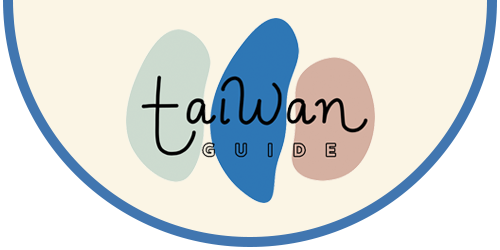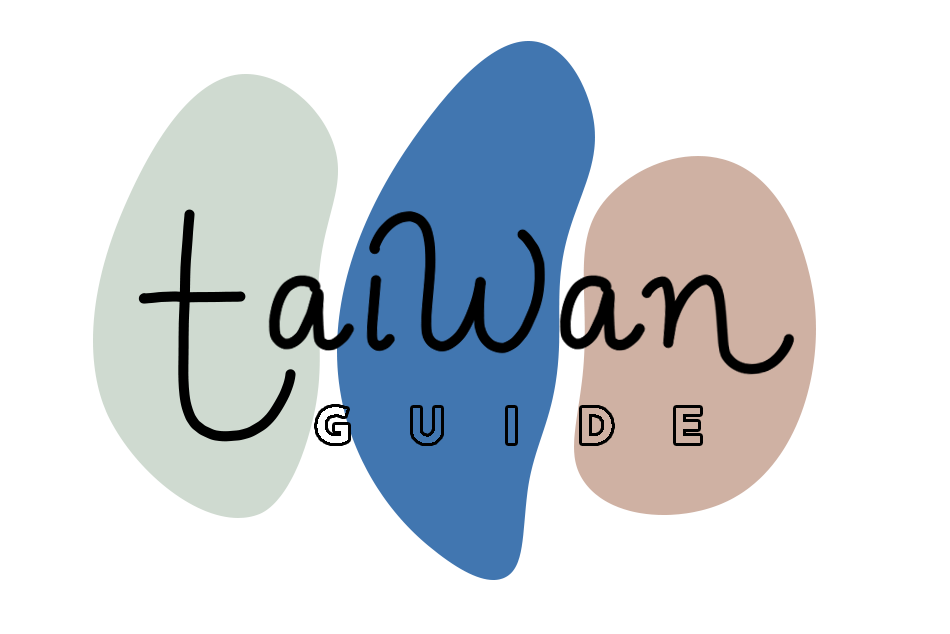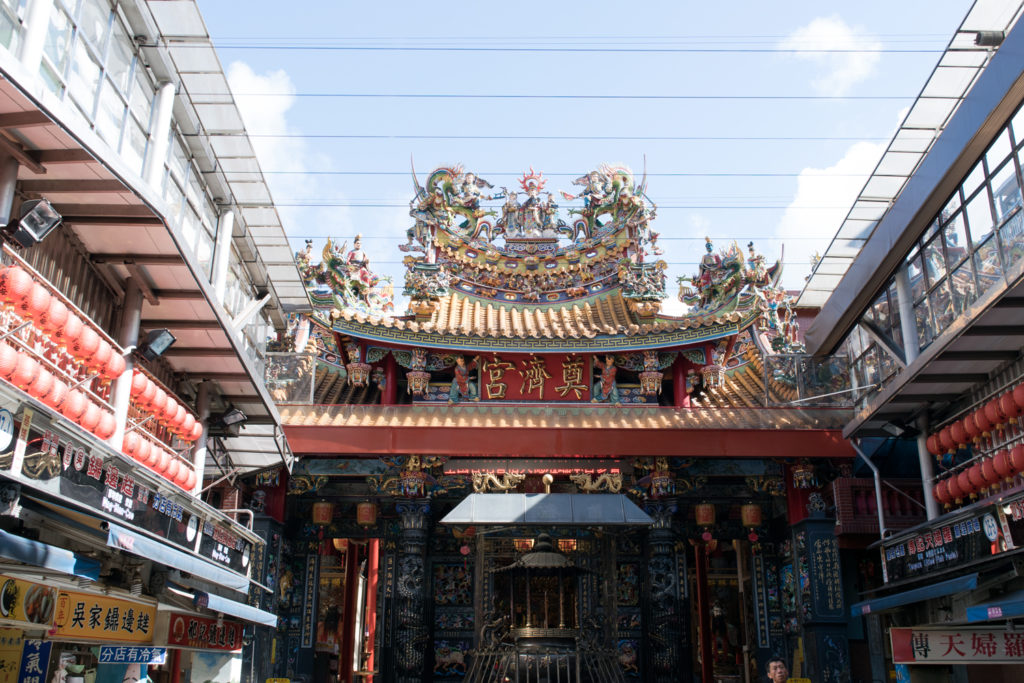taipei one day itinerary
Taipei is a large, populated and de-centralized city, which makes it intimidating to plan a one day itinerary. The good thing is that Taipei’s MRT station is fast, clean and reliable and can get you where you need to go easily and efficiently all for about $6. The true challenge is getting the best of traditional Taipei and contemporary Taipei in one day, a solid dose of culture and walking off as many meals as possible in 24 hours with a schedule that makes geographic sense (because let’s be real, a lot of the ones out there don’t).
While it is definitely easier to split up different parts of the city over a few days, whether you’re here on a layover or stopping by before heading elsewhere on the island, there is some method to the madness in this one day itinerary. This itinerary works for a first trip or a fortieth, for a solo trip or a group. It’s all accessible via the MRT (get a 1 day pass for 150NT or 24 hour pass for 180NT), and can be adjusted based on interests and weather (though for the most part, it works rain or shine, and year round).
The itinerary is written from morning to night, but in theory, you can start at any point in the 24 hours.
wake up with locals at Long Shan Temple 龍山寺
MRT Station: Long Shan Temple Station (blue), exit 1
Recommended Time: 07:00 or 08:00 the earlier the better to avoid crowds, the temple opens at 6am
Start your day in one of the most historic neighborhoods in the city, Wan Hua district. Here in the morning, it’ll be a very local crowd, skewing heavily toward an older population. In recent years, there’s been some more development and historical preservation in the area, but it still feels very traditionally Taipei. From the MRT station, take exit 1 and walk across the park to Long Shan Temple, a historic temple that incorporates Buddhist, Taoist and local folk religions. You’ll notice that Taiwanese temples are pretty much the opposite of European cathedrals. Even in the early morning, activity is bustling. If you happen to catch it on a special prayer day, it can be borderline chaotic. The smell of incense, the clapping, the bowing, the flowers and fruits and snacks piling the altars, the rhythm of people going through worship methodically, the muscle memory movement through the crowded space.
Without a guide, it can be an intimidating place to visit, but they have an English language guide online to help you navigate. In general, enter the temple from the right side. There is an area where you can wash your hands before entering. Step over the ledge, not on it. One inside, you can get 3 incense sticks and go by the flames to light them. Then, go from front to back, right to left, moving in a counterclockwise fashion around the temple. The incense sticks go in the 3 middle censers at the front, center and back of the temple. Photography is allowed (though perhaps not recommended to directly take photos of the deities), and you’ll often see tour groups, but generally as long as you’re mindful of worshippers and not standing right in front of an altar or censer.
After visiting the temple, walk over to “Herb Lane,” which specializes in traditional Chinese herbs and a bitter black herbal tea (青草茶 qing cao cha) that, while very healthy and a popular drink to cool off (in Chinese medicine terms), is admittedly an acquired taste. To the other side of the temple is a street full of shops for Buddhist handicrafts and religious items. Walk over to Bopiliao Historic Block, a cultural landmark of 18th century architecture that captures the history of the neighborhood and hosts cultural events and exhibitions.
while you’re here:
- Herb Lane – an alley adjacent to Long Shan Temple filled with Chinese herb shops and herbal tea stands.
- Bopiliao Historical Block – a block of pristinely preserved 18th century architecture with galleries and events.
obligatory stop at CKS Memorial Hall 中正紀念堂
MRT Station: CKS Memorial Hall Station (red, green) – exit 2 or 3 for breakfast, or exit 5 for the park.
Recommended Time: 08:00-10:00, mornings are more peaceful with fewer tourists (and in the summers, marginally less hot for a walk outside in the gardens)
Get back on the MRT and take it (in the Nangang Exhibition Center direction) 1 stop to Ximen. Then, transfer to the green line (toward Xindian) and take it 2 stops to CKS Memorial Hall Station. Before you go to the memorial hall itself, stop by for some breakfast, at Ding Yuan for traditional Taiwanese breakfast fare (they’re known for their scallion bread with egg, think of it as a Taiwanese breakfast sandwich), or at Jin Feng for a decadent yet cheap breakfast of lu rou fan (braised pork rice).
Then, make your way over to the urban park that is CKS Memorial Hall, a cultural landmark with beautiful gardens and exhibition halls. Chiang Kai Shek was a leader of the Republic of China, and a politicized figure that speaks to the nuances of Taiwan’s history. Regardless of politics, the public space is well-loved by locals. Kids love feeding the fish (they have places to buy fish food by the ponds). Elderly love taking strolls through the shaded pathway around the perimeter of the park. The main hall is a gathering space (with free wifi and AC) and museum all in one, often hosting visiting exhibitions in addition to national history galleries. The regal blue and white structure is flanked by two vibrant red traditional Chinese architecture buildings, the National Theater and National Concert Hall. The plaza in between is also host of various public events throughout the year, from Chinese opera performances to the annual lantern festival, it is a popular place for families and visitors alike. Take some time to stroll through the gardens in addition to the memorial itself. If you get there at the top of the hour (between 9am and 5pm each day), you can watch the changing of the guards.
while you’re here:
- For breakfast: Jin Feng specializes in braised pork rice and traditional side dishes in a no-frills location (also great for lunch or late night). Ding Yuan is a traditional breakfast joint, and particularly popular among Japanese tourists. They serve traditional pastries as well as baos and soup dumplings. Both are cash only and pretty cheap (full meal for <100NT or $3).
- Nanmen Market: a recently renovated indoor traditional market known for their prepared food stations and specialty items. Known to be a little more polished than other traditional markets in the city. They also have a food court for cheap eats, though it is more of a local dig and not super tourist-friendly when it comes to language barriers.
- For coffee: grab coffee to go from Louisa or a coffee and bread breakfast combo to go from Gakuden, or sit down for a cup at Elsewhere Cafe, or Cafe de Gear.
wander old Taipei at Di Hua Street 迪化街
MRT Station: Beimen Station (green) – use exit 3 and then continue north on Tacheng street until it turns into Dihua street.
Recommended Time: 10:00 or 11:00, most things are open by then and it gets more touristy as you get closer to midday and afternoon
Get back on the MRT and take the green line (toward Songshan) 3 stops to Beimen station. Use exit 3 and then walk north on Tacheng street until you start seeing a bunch of different fabric stores and signage that let’s you know you’ve reached the Dihua historic district. You’ll know you’ve reached the heart of it when you see Yong Le Market and the Xia Hai City God Temple. Dihua street is a historic merchant street filled with traditional Chinese herb shops and fabric stores. In recent years, it has become the center of a cultural resurgence, now filled with beautiful tea shops, pottery galleries, museums, artisan souvenir specialty shops, restaurants, cafes and more. Most things are on this main street (so you don’t really need to worry about getting lost as you wander) and it extends up about 1 km to Mingquan W Road (right by the Taipei Bridge), though the crowds generally taper off by Liangzhou street.
This is a great place to pick up some not tacky souvenirs. There are several shops specializing in woodwork and bamboo products, and many others specializing in pottery and teaware. While the many herbal stores may be tempting, it’s best to come with a guide if you’re looking for any special traditional herbs. Take your time to leisurely stroll the street, pop into shops (you’d be surprised how deep some are, sometimes dropping you off on another street, or hiding a beautiful courtyard or an upstairs café), take in the distinct architecture (you don’t really see this in any other part of Taipei), and explore the many galleries, pop ups and mini museums along the way.
While you’re here, you can also walk over to Dadaocheng Pier Plaza, which has been redone to be a nice riverside park with food stands and a fair-like vibe. If it’s morning and not a Monday, pop inside the recently re-done Yong Le Market (with a food market downstairs and wholesale fabric market upstairs).
while you’re here:
- Yong Le Market – a historic market that houses wholesale fabric merchants, as well as a traditional market at the ground level
- Dihua 207 Museum – a small museum that chronicles the history of the neighborhood
- 迪化街十連棟 Shi Lian Dong – a nameless heritage building with shops and galleries
- Dadaocheng Pier Plaza – a riverside park with food stands and events
- 富自山中 Fu Zhi Shan Zhong – a shop specializing in wholesale ingredients like dried fruit and spices
grab lunch at Yong Kang Street 永康街
MRT Station: Dongmen Station (red, orange), exit 5
Recommended Time: 12:00 – 14:00, there really isn’t avoiding crowd here, it’s always busy except early in the morning (aka when most things are still closed) or after dinner time (when many things are about to close), so you might as well come at meal time
If you’ve made it all the way to the northern end of the Dihua street shopping area, walk over to Daqiaotou Station (orange line) and take it 6 stops in the Nanshijiao direction to Dongmen station. Or, if you’re closer to Beimen station, take the green line one station in the Songshan direction to Zhongshan, then transfer to the red line and take it 4 stations in the Xiangshan direction to Dongmen. Use exit 5, which will drop you off right at the entrance of Yong Kang Street, the famed foodie street that has only gotten more and more popular over the years, and where you’ll be getting lunch.
You’ll see a huge crowd gathered on the side of Xinyi road. That would be for Din Tai Fung (which used to be a humble no-frills noodle and dumpling shop just a decade ago, and has now turned into a global franchise and gotten a significant makeover and up-size in its original location. Busloads of tourists are dumped in front of it on a daily basis. Do yourself a favor and don’t even entertain the idea of getting lunch here (and if you do want DTF, go to a different location – power rankings here), and instead explore the other options that tend to have shorter, more tolerable lines.
Taiwan’s pride and joy is all on this street, so you’ll have plenty of things to choose from. For beef noodle soup alone, there are several old time shops and tourist favorites like Yong Kang Beef Noodle and Lao Zhang Beef Noodle. For Tainan specialties, there’s 度小月 Du Xiao Yue. For easy small eats, there’s D-Ka (known for their pork hock rice). For the lesser known but famously delicious shenjianbao at Kao Chi gives Din Tai Fung’s soup dumplings a dark horse rival. For more traditional Taiwanese food, there’s Feng Sheng 豐盛食堂 and Hakka cuisine at Lu Sang 呂桑食堂. For a cheaper more “street” version of Din Tai Fung type fare, there’s Zhu Ji 朱記. For a snack, there’s Tian Jin scallion pancakes (the line is ever present but moves fast) And for dessert there’s high competition among the ice shops (Smoothie House is the central one tourists flock to, and Ice Monster is a long time favorite). There are also countless cute cafes and shops in the neighborhood, many of which are only open in the afternoon.
If you want to avoid the tourists and experience the more local part of the neighborhood, simply cross the street to the other side of Xinyi Road. The alleys are filled with hole-in-wall eateries and on most days there is an open market that leads all the way to Dongmen Market (which, though a bit of a labyrinth, also has a lot of popular cheap eats hidden inside).
shop and gawk at Taipei 101 / Xin Yi District 台北101 信義區
MRT Station: Taipei 101 Station (red), exit 4
Recommended Time: afternoons and evenings are best, since most things don’t open until 11am or later
Once you’re full, get back onto the MRT and take the red line 4 stops to Taipei 101 station. Use exit 4, which will drop you off at the foot of the skyscraper right in front of the chaos that is the Din Tai Fung located in the most recognizable landmark in the country (aka Taipei 101). Take a deep breath and push through the international crowd and you’ll be conveniently in the food court of Taipei 101’s food court, which let’s get one thing straight, is the heart of any department store in Asia.
Taipei 101’s department store is all about opulence, with pretty much every major international designer brand represented. You can also access the observatory (or check out the views from Starbucks on the 35th floor). Or, if its a cloudy day and observatories aren’t your thing, continue on to explore the heart of Taipei cosmopolitan shopping. The ever-growing network of department stores in the XinYi shopping district is all interconnected via sky bridges and tunnels, and you can make it from Taipei 101 all the way to Uni-UStyle and Taipei City Hall station without getting rained on or walking ground level, shopping through upwards of 13 department stores (plus a multi-story movie theater complex and standalone mega-bookstore) along the way. Even if you don’t want to shop, it’s fun to just gawk at the sheer number of food courts in one place, and how each one somehow manages to be packed at all hours.
If you’ve somehow worked up an appetite, you have hundreds of options for an “afternoon tea” (which in Taiwanese terms is basically that full meal you have between lunch and dinner that is validated by the fact that you drink coffee with it, yes coffee, because then it’s more of a western tradition and therefore doesn’t count as an official meal even though you ate an entire sandwich AND a waffle). If you do, a solid choice would be Chun Shui Tang, which is incidentally the least western of the “afternoon tea” being more of a traditional Taiwanese tea shop and one that lays claim to have invented boba milk tea. But seriously, any of the latest foodie trends in Asia will probably have some presence within the dozen plus buildings here, so do as the Taiwanese do and eat your way through a shopping afternoon.
hike up for the views at Elephant Mountain 象山
MRT Station: Elephant Mountain Station (red), exit 2
Recommended Time: about an hour before sunset (or early in the morning to beat summer heat)
Now, if it isn’t raining, it’s time to walk off afternoon tea just in time to capture Taipei in all its glory during golden hour. You can either walk directly, or take the MRT one stop to the end of the red line at Xiangshan or Elephant Mountain. There, take exit 2 and walk through the park, following the signs to the entrance of the trail.
The trail is mostly stairs, and relatively easy (children friendly, puppy friendly). It’s about a 10 minute “hike” up to the main viewpoint (the six boulders( that will get you postcard views of the city, but you can also keep going to other landmarks and vistas further up the mountain. Around sunset time, you’ll likely see a bunch of tripods set up, ready to capture the rapid change from day to golden glow to dusk when the city begins to light up, to the nightscape. Keep going on to the Xiangshan Fireworks Lookout for another breathtaking view of the city from above.
This is an urban hike if there’s ever been one. You’ll feel more like you’re at an outdoor gym than one with nature, given the crowds, but it’s all worth it for the views (and let’s be real, not a ton of effort to get there).
while you’re here:
Stop by the famed bakery Wu Pao Chun for artisanal bread featuring some of Taiwan’s finest ingredients.
street food dinner at Rao He Night Market 饒河街夜市
MRT Station: Songshan Station (green) exit 5
Recommended Time: 18:00 or 19:00 – tbh any time after 5pm things will be bustling, but the crowds will probably peak between 7 and 9pm
After the brief hike, it’s night market time. Rather than taking 13 stops on the redline to Jiantan for the touristy Shilin Night Market, go to the smaller but still extremely popular Rao He Night Market. It is more direct to take a bus, cab, bike or walk to get there, since the MRT would take you in a big circle when in reality it is only 2.5 km north of Elephant Mountain.
If you walk or bike, follow Songde Road to Songshan road and you’ll also go through Wufenpu, the wholesale fast fashion district that is popular among young shoppers. Keep going until you reach Songshan train station, and see the glorious Ciyou Temple right at the entrance to the night market.
Rao He night market is traditionally known for their herb pork ribs soup, but these days has a whole array of street food like any good night market. Compared to Shilin, it is more food focused, and only has some games and shopping scattered throughout. Don’t miss the famous “Fuzhou Ancestor Pepper Pie” (you won’t miss it, it’s right by the entrance and there will be a line). Take your time to wander through and immerse yourself in the night market culture of eating as you walk with skewers and greasy paper and plastic bags, breathing in the fumes of smoke from the grills and all of the spices and smells while people shout at you from all sides. Be sure to bring cash in small denominations. And if you ever need some water or just some AC relief, pop into 7-Eleven or other stores before diving back into the street.
sing the night away with KTV at Xi Men Ding 西門町
MRT Station: Ximen station (green, blue) exit 6
Recommended Time: 21:00 or later, shops tend to stay open decently late, and the street vendors hang around until midnight, the KTV places are usually 24 hour or only close for a couple hours in the early morning
You don’t know karaoke until you’ve experienced karaoke in Asia. Karaoke bars in the U.S. are weak. In Taiwan, these are 24 hour complexes filled with AYCE buffets, room service, your own private bathroom and more. It’s as popular a gathering activity for students as it is for colleagues or friends or family members. You can pay by room, by head, by hour. Locals toil away at KTVs into the wee hours of the night, as a comfortable, air-conditioned place to hang out. It’s even more popular on rainy days and often booked out during typhoons.
There are KTV palaces all around the city, but if you’re going to do it, you might as well go to Ximending, the “young people” shopping district in Wanhua (often described as the Shibuya of Taipei) that has several KTV options in addition to movie theaters and fast fashion shopping. From Rao He Night market, take the MRT green line toward Xindian 7 stops to Ximen station. Use exit 6, not necessarily because it’s particularly close to a KTV place, but because that’s *the* exit to use. It’s where everyone meets, it’s where you get dropped right at the entrance of the pedestrian area. Before ducking into a KTV building where time is no longer relevant, grab some boba and take some time walk around and soak up the energy of Ximending and fashion trends of Taipei with the endless neon glow of Taiwanese, Japanese and Korean chainstores and stands spilling into the streets. There are also a bunch of internet-favorite themed cafes, like the toilet cafe and a maid cafe.
And if you really want bonus points for a true day-in-the-life Taiwanese experience, pop into one of the dozens of hair salons in the area and get your hair shampooed and conditioned (yup, it’s a thing to do).



